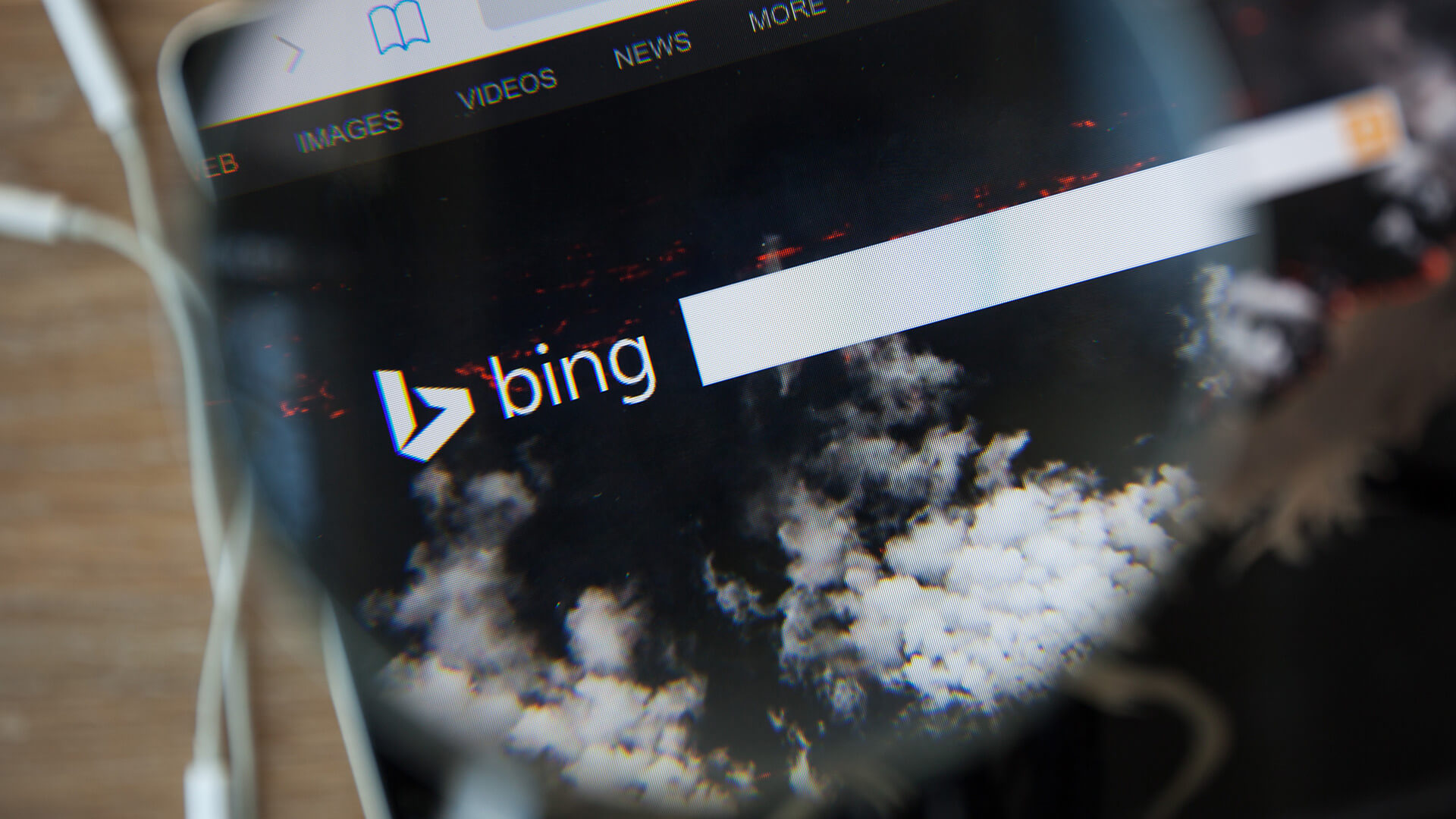Bing turns 10: Why it’s been more disruptive than you think
A look back, and ahead, at Microsoft's search business.
Ten years ago today, Microsoft launched Bing. A decade in, Bing’s evolution looks different depending on your perspective. After investing billions, Bing’s market share is still small, but Microsoft has stayed committed to search, used it to enhance its other products and has bigger plans ahead for its advertising business.
A condensed history of Microsoft’s foray into search
It’s Bing’s 10th birthday, but Microsoft’s foray into search engines began nearly 21 years ago when it used technology from Inktomi, Looksmart and AltaVista to power Bing’s ancestor MSN Search. MSN Search eventually became known as Live Search.
By 2005, it was clear that Microsoft aspired to be a player in the search engine sector when it began using its own proprietary web crawler. Image search, however, would continue to be outsourced to a third party for another year — a far cry from the deep learning now used in Bing Image Search.
Microsoft moved further away from third-party suppliers in 2006 by implementing its own image search algorithm and switching to its own ad service, then called MSN adCenter.
The next year, the company made a number of changes that continue to impact how it operates today, including stripping the Windows branding from its search engine and appointing now-CEO Satya Nadella to lead its newly-formed Search and Ad Platform Group.
Over the following years, a string of reorganizations, consolidations and discontinuations would lead to the rise of Microsoft’s modern search machine, Bing. Named after the sound “in our heads when we think about that moment of discovery and decision making — when you resolve those important tasks,” Bing officially replaced Live Search on June 3, 2009.
Bing’s new groove under Nadella
Looking back at what might’ve been helps us get a better appreciation for just how far Microsoft and Bing have come. Nokia’s then-CEO Stephen Elop, who was reportedly open to selling Bing, was another candidate in the running to succeed Microsoft CEO Steve Ballmer in 2014. Nadella, on the other hand, had nearly two decades at Microsoft, including in search, and a background in engineering, computer science and business under his belt. Those experiences allowed him to recognize Bing’s potential value to Microsoft’s overall business strategy. And, in case you were curious, Bing became profitable just a year and a half after Nadella became CEO.
Under Nadella’s Microsoft, Bing became the vehicle that drove advancements in AI and machine learning and the “intelligent fabric” woven into Windows 10, Xbox, Azure, Office 365, Cortana and other Microsoft products.
Microsoft also acquired LinkedIn and GitHub and has begun finding ways to connect the dots between Bing and those platforms. Although GitHub’s benefits for search marketers (and Microsoft, itself) is yet to be determined, it is opening up to more interaction with the developer and researcher communities through initiatives like making one of Bing’s vector search algorithms available as an open-source GitHub project.
To the beat of a different drum
To compete with Google, Bing has had to walk a fine line between feeling familiar to users while offering them reasons to switch. It vied for market share with expensive marketing campaigns — Bing It On, for example — early on and continues to run what’s now called the Microsoft Rewards program.
It has also been a first-mover at times. Its disavow tool for SEOs came out several months ahead of Google’s version. More recently, it has rolled out “intelligent search” results and news spotlights to give users more context in the search results.
Bing’s API has become a valuable tool for search development and SEOs.
“While there are certainly many ways in which Bing helped advance our industry (Bing Webmaster Tools being one of them), I think the open access to their API has had an even more profound effect on the search ecosystem in general,” said Russ Jones, principal search scientist for Moz.
“Without Bing, there would be no viable privacy-centric API. Of all the things Google has delivered on, they have never (nor will they ever) provide a search engine that fully respects the privacy of their users. But Bing’s web search API has opened the door to entrants like DuckDuckGo, which can build a safe, private experience for users on top of a world-class search engine, without using privacy-invasive techniques to fund the business. It’s hard to express how important Bing has been in this regard.”
Microsoft’s ownership of GitHub and recent algorithm open sourcing are bridges to the researcher and developer communities. These moves may have strong business cases behind them, but the company doesn’t seem to mind that “a rising tide lifts all boats.”
“It’s hard to overstate the value of Bing’s API for research purposes. There are so many applications that require bulk or real-time SERPs which could not exist without a proper search engine with API access,” Jones added.
“As Google has steadily rolled back access to its SERPs via programmatic methods, Bing has continued to offer an accessible API. This has single-handedly powered NLP [natural language processing] research, especially real-time applications, at scales that would be fundamentally unattainable if people were forced to scrape.”
Some might dismiss these as moral victories, but that downplays the amount of thought and development that has gone into Bing’s search experience and marketer offerings — offerings that provide an economical alternative or extension of campaigns beyond Google.
Optimizing for Bing still isn’t a thing
Despite offering numerous unique SERP features, most search market share estimates put Bing in a distance second place. For SEOs this means it often doesn’t get a lot of attention.
“I have found the most valuable thing about Bing to be to help confirm client ‘shot-in-the-foot’ SEO issues,” said Andrew Shotland, CEO and founder of LocalSEOGuide.com, explaining that he uses Bing to check whether organic traffic dips can be attributed to a Google algorithm update or other SEO problems.
Bing’s place in Shotland’s toolbox isn’t unique to him either, as Bing’s relatively small share of the search market perpetuates its image as an ancillary platform for marketers — a luxury for brands and companies with enough resources to cover their bases.
“The data we get from Bing is valuable,” admitted Dana DiTomaso, president and partner at Kick Point, “but with such a limited market share, it’s hard to draw conclusions or extrapolate this out to include Google users as well.” For all its merits, Bing has yet to shake off bridesmaid syndrome for the majority of searchers and the brands and marketers that follow them.
“Despite a lot of success, and Bing winning on many dimensions in blind tests, it has taken significant focus and grit for us to earn consumer use incrementally over 100 months of consecutive growth,” Steve Sirich, GM of Microsoft Advertising Marketing, told Search Engine Land when asked about the ways in which Bing has struggled to keep up with expectations.
“There has not been an easy step-change but demonstrates the focus and commitment we have to this industry,” he added, pointing to Bing’s doubling of its PC search market share since launch and its growth into Microsoft’s fifth largest business, accounting for roughly $7 billion from advertising.
From playing catch up to developing exclusive ad features
Microsoft is making a huge bet in advertising and on the advertising group, executives told agency representatives at the Microsoft Advertising Partner Summit in Seattle last month.
For most of its existence, Bing Ads was defined almost as much by its relationship with Yahoo as anything else. The search partnership between Microsoft and Yahoo was often strained and convoluted for advertisers to navigate (you can find our archives on this history here). Yahoo is now a shadow of its former self and under the umbrella of Verizon Media. In January, Microsoft Advertising became the exclusive search advertising platform for Verizon Media properties, including Yahoo and AOL.
Over the years, Bing gained momentum internally at Microsoft. And In 2014, Microsoft began articulating its roadmap for Bing to grow market share through integrations with Microsoft properties — from Office to Xbox to the ill-fated Windows Phones — as well as external integrations such as with iOS, Twitter, Facebook and Amazon. “We think of Bing less and less as a destination portal. We’re trying to put search where users are,” then director of search Stephan Weitz told Search Engine Land.
After doubling down on being a search-only advertising platform for a period — that differentiated it from Google AdWords at the time, but audience targeting was starting to take off and Microsoft hadn’t bought LinkedIn, yet — Microsoft Advertising is now taking a wider perspective on the capabilities it can offer advertisers.
“Bing and Microsoft Advertising are challenger brands—but they’re challenger brands that are part of one of the the top three largest companies in the world,” said Jeremy Hull, SVP of innovation at iProspect. “What I find most exciting about Microsoft Advertising is that they’re once again moving away from simply providing parity with other solutions. They’re building innovative differentiators that competitors can’t touch, such as integration with LinkedIn for incredibly powerful B2B targeting.”
That broader charter is reflected in last month’s rebranding as Microsoft Advertising. The consumer-facing search engine is still Bing, but the new name reflects a few things about where the advertising side of the business is heading. “We are redefining the soul of what Bing stands for,” Rik van der Kooi CVP, Microsoft Advertising, said at Microsoft Advertising Partner Summit. “We will be hearing more about the differentiation on what we want Bing to be in addition to being a great search solution.”
The Microsoft Audience Network (MSAN), launched last year, combining Bing search signals, Microsoft’s AI assets and its audience graph, which includes LinkedIn for advertising Microsoft properties such as MSN, Outlook.com and the Edge browser.
Bing’s integration into multiple products continues, and it’s become a foundational piece of Microsoft’s AI efforts. It continues to focus on market share growth through partnerships. For example, in a deal with Amazon’s Silk browser, Bing powers search for more than 10,000 partners, said van der Kooi.
These factors have afforded the search and advertising groups more flexibility in the features and capabilities they can develop and offer. AI capabilities have given them the “right to innovate,“ as David Pann, general manager of global search advertising at Microsoft, put it last fall at SMX East, Rather than fast-following Google Ads to keep up parity, the “whole idea of parroting versus innovating is flip-flopped,” he said.
While it still lags in market share, it has won over many advertisers. “I was around for the launch of Bing in 2009. It was an exciting time for advertisers — we could see that Microsoft was serious about search ads, and were optimistic about the future,” said Melissa Mackey, search supervisor at Gyro. “Today, Microsoft Advertising has carved out a permanent place at the table when it comes to paid search. Advertisers often see better results from Microsoft Ads’ unique audience. Now, with their partnership with LinkedIn, advertisers can get audience targeting options that aren’t available with any other search provider. Microsoft Ads continues to deliver innovative solutions for advertisers, while maintaining the focus on the customer that has made them a favorite in the PPC industry.”
The company is also focusing deeply on a few core verticals to develop specialized solutions — such as a co-bidding pilot for retailers and brands — and working with agencies to help them deploy Microsoft technology. A program called One Microsoft for marketers incorporates advertising, Azure machine learning and other Microsoft technologies to create custom experiences.
Microsoft’s mission accomplished?
Success is measured on relative terms. Before passing judgment on how far Bing has come, keep in mind that it is one of Microsoft’s many products — albeit a very important one — and that it doesn’t operate with the same resources as Google.
“We have demonstrated that there can be a competitive player in the industry that is a viable alternative to the incumbent for consumers, publishers and advertisers,” Sirich asserted, concluding that, “This has spurred innovation and helped to keep pricing in check, which has benefited the entire industry.”
Advertisers continue to root for competition and innovation. “It’s my hope that Microsoft continues to lean into these differentiators,” said Hull, “which will continue to shift the perception of their advertising offering from being seen as just an extension of a channel strategy and into a completely separate solution that delivers compelling results for a variety of brands and verticals.”
Contributing authors are invited to create content for Search Engine Land and are chosen for their expertise and contribution to the search community. Our contributors work under the oversight of the editorial staff and contributions are checked for quality and relevance to our readers. Search Engine Land is owned by Semrush. Contributor was not asked to make any direct or indirect mentions of Semrush. The opinions they express are their own.



